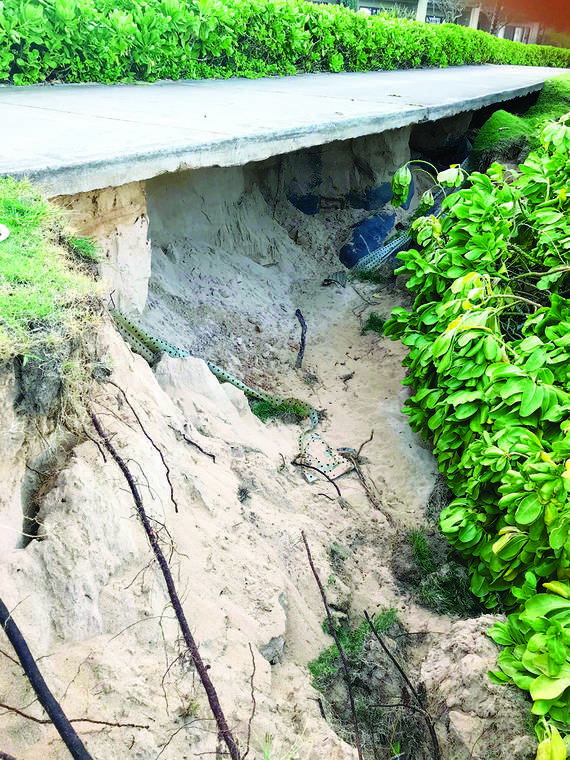LIHU‘E — The county Planning Department isn’t completely satisfied with new additions to the county’s shoreline-setback ordinance that were recently passed through the Kaua‘i County Council.
”It’s not quite totally there, though,” Planning Director Ka‘aina Hull said last week.
Hull noted that while the county’s shoreline setback is “one of the most progressive in the nation,” the county hasn’t “smoothed the data out,” incorporating the differences of sea-level rise around the island, which will face different levels and rates of erosion through the years, some much worse than others.
“We anticipate being back within the year because we’re going through those studies now,” Hull said. “It’s not quite there, but what we can provide and what we can address I think is prudent to do so now, which is why you folks have the bill.”
Bill No. 2813, Draft 1, which passed unanimously through the council on Jan. 27, makes amendments to the Kaua‘i County Code’s Comprehensive Zoning Ordinance, updating shoreline-setback limits and coastal-erosion rates. The measure was first introduced in November by council Vice Chair Mason Chock by request.
The coastline, smacked by high surf and subject to sea-level rise, can face coastal flooding, tsunamis and hurricanes causing coastal erosion, a hazard to people and property near the shoreline. In 2010, the University of Hawai‘i Coastal Geology Group completed the Kaua’i Coastal Erosion Study, projecting coastal erosion. The study was updated in 2018, prompting the need for an update to the county’s official Coastal Erosion Study maps.
The bill increases the minimum setback requirement from 40 feet to 60 feet for development in all coastal properties, regardless of a sandy or rocky shoreline, and introduces a “coastal-hazard-disclosure statement” that must be signed by a property owner prior to the sale. State authorities have attempted to develop such a statement without success.
The county bill states that when a developer is building within 500 feet of the shoreline, they are subject to these rules.
In 2017, a similar bill was introduced by Chock and then Council Chair Mel Rapozo.
“This came up after meeting with Caren Diamond and seeing some of the repair issues and how they are slipping through and being interpreted from the homeowner’s perspective,” Chock said last November, when the Bill 2813 was introduced.
The Planning Department enlisted the help of those on the coastal-advocacy and private-property sides in a working group on adopting the ordinance. Community activists and land-use attorneys were among the members of the working group, Hull said.
Councilmember Felicia Cowden expressed her concern for the erosion of the Ke Ala Hele Makalae multi-use coastal path near Fuji Beach in Kapa‘a, and at Wailapa Road in Kilauea.
“Our beaches, which are one of our biggest recreation areas, is a hazardous, erodible area, but we need to be sensitive for public-enjoyment activities,” Hull said.
In any cases of conflict between state and county law, the more-restrictive requirements apply.
•••
Sabrina Bodon, public safety and government reporter, can be reached at 245-0441 or sbodon@thegardenisland.com.




